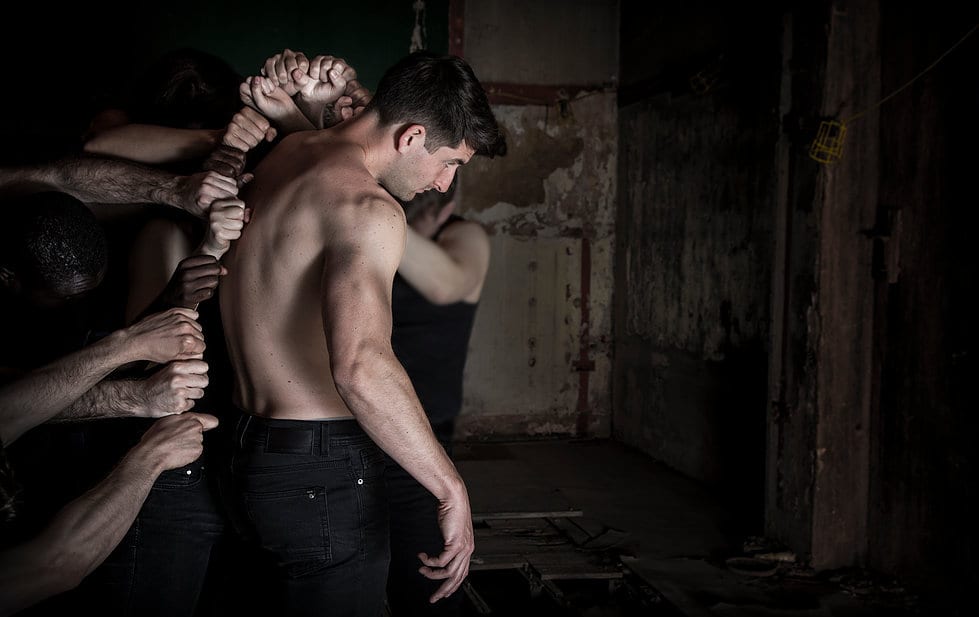Richard III is a bloody play, and this is a production that emphasises the violence from the explosive first scene. In dimmed red light, on a red mat, the ghostly shapes of the actors take the stage for an overwhelmingly physical battle scene, choreographed to a pounding bass beat. Although the sheer number of actors on the (rather small) stage works well here, in this mid-battle scene of chaos and adrenaline, there are several scenes when it feels rather overcrowded. It does serve to provide a sense of the claustrophobic paranoia of the court, but the effectiveness of ensemble scenes depends on every member being utterly committed, and sadly this is not the case. Although many of the ensemble actors perform with admirable zeal, several had moments where they looked as if they were merely going through the motions, ruining the magic of the moment.
The Faction is a company famed for the physical aspect of its theatre but, conversely, the moments that shine brightest are those that allow the individual actors to display their talents, unencumbered by background distractions. There are still moments of physical brilliance – the construction of Richard’s horse, for example, was particularly enchanting – but by and large the strength of this production comes from individual performances, particularly that of Christopher York. York’s Richard III is alternately wheedling and maniacal, a conniving megalomaniac whose iconic physical deformation ebbs and wanes along with his tortured psyche. This decision for Richard’s hunched back and limp to be almost entirely psychosomatic underlines the physical effect of language that is brought to the forefront of this production.
Richard’s bare feet stand in contrast to the sturdy boots of most of the male characters, emphasising that his is a very different kind of power. He is a Machiavellian puppet master, sickeningly faux-innocent as he unfurls his machinations with a swish of his hand. York is especially magnetic in the second half, as Richard’s restless paranoia becomes his downfall. He physically shrinks under his mother’s curse, his delivery becoming convoluted and stuttered as the poisonous words that are his greatest asset desert him.
Despite the murderous content of the play, the production manages to find some humour. The murder of Clarence is unexpectedly funny, thanks to a brilliant performance by the two would-be murderers. The edged dramatic irony of Shakespeare’s speeches is brought to the forefront, largely thanks to York’s sardonic delivery. However, the action is often shadowed by swinging, swaying corpses in the background, and we are never allowed to forget just how much blood Richard has on his hands. These moments of surrealist darkness are amongst the production’s strongest, and it is when more realist approaches intrude that it begins to fall apart. The sound effects used throughout the play are almost entirely unnecessary, and many of them would be better left to the power of imagination.
Overall, however, this is a thrilling production, full of fraught, electrifying moments. Kate Sawyer excels as Queen Elizabeth, a heart-breaking display of grief and despair that reverberates through the production. Her grief finds its pair in Queen Margaret, emphasising the cyclical nature of the power plays. The production ends in the same pitched frenzy with which it began, only this time Richard is helpless. His cycle has ended, but the next chapter of English history has only just begun.

